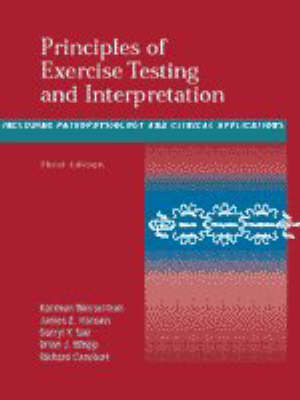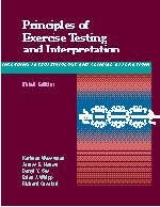
Principles of Exercise Testing and Interpretation
Lea & Febiger,U.S. (Verlag)
978-0-8121-1634-2 (ISBN)
- Titel erscheint in neuer Auflage
- Artikel merken
This text addresses the problems of evaluating the patient with exercise intolerance, with physiology, pathophysiology and differential diagnosis as frames of reference. It contains a wide range of clinical examples, as well as providing the justification and tools for using exercise testing as part of cardiorespiratory examination. Thus, it attempts to span the field of "exercise", from basic concepts in exercise physiology to the practical aspects of delivering a meaningful report for the medical record that specifies the mechanism and degree of a subject's exercise limitation. The work also provides a more complete understanding of the disease process and its effect on exercise performance. It gives the conceptual basis for analyzing how cardiovascular, respiratory and other disorders limit exercise performance. Appendices cover symbols and abbreviations; devices and systems for collecting and analyzing physiological data; calculations - formulae and examples; preparation for the exercise test; and tables and nomogram.
Part 1 Exercise testing and interpretation - an overview: why measure gas exchange to evaluation cardiovascular function and cellular respiration?; cardiac stress testing and pulmonary stress testing - a fallacy; normal coupling of external to cellular respiration; quantifying state and time-course of cellular respiration, from measurements of external respiration; patterns of change in external respiration (02 uptake and CO2 output) as related to function, fitness, and disease; factors limiting exercise; evidence of systemic dysfunction uniquely revealed by integrative cardiopulmonary exercise testing. Part 2 Physiology of exercise: skeletal muscle; oxygen cost of work; lactate increase and the anaerobic threshold; metabolic-cardiovascular-ventilatory coupling; gas exchange kinetics - O2 uptake, CO2 output, O2 debt and O2 deficit; control of breathing; dietary substrate and the physiological responses to exercise; summary. Part 3 Measurement during integrative cardiopulmonary exercise testing: what is an integrated cardiopulmonary exercise test?; when should integrative cardiopulmonary exercise testing be used?; progressively increasing work rate exercise testing; constant work rate - exercise testing; summary. Part 4 Pathophysiology of disorders limiting exercises: obesity; peripheral vascular diseases; heart disease; pulmonary vascular diseases; ventilatory disorders; defects in hemaglobin content and quality; chronic metabolic acidosis; muscle disorders & endocrine abnormalities; anxiety, and malingering; defect combinations; summary. Part 5 Protocols for exercise testing: description and use of incremental work rate tests; description and use of constant work rate tests; treadmill test for detecting myocarcial ischemia; test suitable for fitness evaluation; arm ergometry; twelve-minute walking test; isometric exercise; evaluating therapy; summary. Part 6 Normal values: maximum oxygen uptake; maximum heart rate and heart rate reserve (HRR); relationship of VO2 and heart rate; the maximum oxygen pulse; brachial artery blood pressure; anaerobic (lactate, lactic acidosis) threshold; oxygen uptake-work rate relationship (AV02/AWR); ventilation, breathing reserve, tidal volume, and breathing frequency; ventilatory equivalents for carbon dioxide (V2/VC02) and oxygen (V2/V02); physiological dead space/tidal volume ratio (Vd/Vt); arterial and end-tidal carbon dioxide (PaCO2, PetCO2, and P(A-a)O2), and arterial oxyhemoglobin saturation (SaO2); mixed venous values; acid-base balance; summary. Part 7 Principles of interpretation: introduction to flow charts; establishing the pathophysiological basis of exercise intolerance; interpretation of constant work rate test; summary. Part 8 Cases illustrating pathophysiology.
| Erscheint lt. Verlag | 1.4.1994 |
|---|---|
| Zusatzinfo | 96 illustrations, glossary, tables, index |
| Verlagsort | Philadelphia |
| Sprache | englisch |
| Maße | 216 x 279 mm |
| Gewicht | 1398 g |
| Themenwelt | Medizin / Pharmazie ► Medizinische Fachgebiete ► Laboratoriumsmedizin |
| Studium ► 2. Studienabschnitt (Klinik) ► Anamnese / Körperliche Untersuchung | |
| ISBN-10 | 0-8121-1634-8 / 0812116348 |
| ISBN-13 | 978-0-8121-1634-2 / 9780812116342 |
| Zustand | Neuware |
| Haben Sie eine Frage zum Produkt? |
aus dem Bereich



